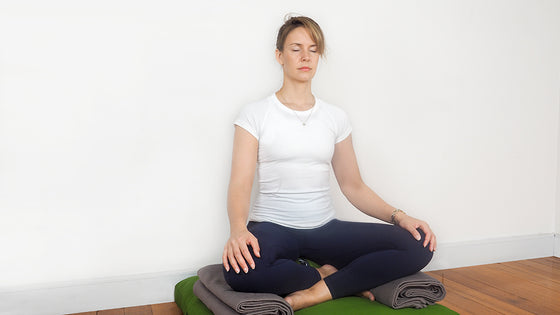- Ergonomic Products
- Ergonomic Furniture
- Yoga
- Meditation
- Pilates
- Air Treatment
- Blog
- Resources
- About Us
- Wholesale
- Ergonomic Products ▼
- Ergonomic Furniture ▼
- Yoga ▼
- Meditation ▼
- Pilates ▼
- Air Treatment ▼
- Blog
- Resources ▼
- About Us
- Wholesale
- Sign in

May 17, 2017

Yoga =
Improved posture - check.
Stronger body - check.
Greater flexibility (hello, toes!) - check.
Better sleep - check.
Calmer mind - check.
While it’s no secret that a yoga practice can deliver some pretty amazing benefits for body, mind and spirit, have you ever considered broadening the ‘feel-good’ factor and benefits to include the environment?
Yoga often starts to weave its magic on firstly the physical body, then expanding to quiet the mind and cultivating a deeper awareness of the relationship with self and others. This positive ripple effect of a yoga practice can inspire practitioners off the mat too, leading to healthier lifestyle choices through diet and self-care, for example.
While making these inspired changes it makes sense then to also encompass the environment we live in. While making a positive impact on the environment can feel daunting, small steps do add up, and what better place to start than your yoga practice! Take a look at our 5 ways to a greener yoga practice for inspiration.
1. Favour organic cotton for your yoga props.
Today’s organic cotton farming practices have changed little over hundreds of years. On a recent trip to India, (where almost 75% of the world’s organic cotton is produced) members of our Stretch Now team when visiting farms that supply the raw source material for Stretch Now products, saw a few of these time-honoured methods first hand, including crop rotation, the use of organic fertilisers, cover crops and chemical-free weed control.
Producing organic cotton is a safer option for the growers as it does not use toxic and persistent chemicals. This reduces the risk of occupational hazards such as accidental poisoning for the farmers and their families.
For those with hypersensitivity, favouring organic cotton is a no-brainer. Studies show that chemical residues do remain in non-organic cotton products, making organic clothing, bedding and textiles that are manufactured without the use of synthetic dyes a wiser choice.
2. Be mindful of your mat.
In general, the cheap yoga mats that are available in chain stores are made from PVC and include toxic chemicals that make the mat soft and pliable. PVC on its own is reputed to being one of the most toxic plastics ever created.
Alternatively, look for mats made from sustainable plant materials such as natural rubber and jute. If you have allergies to rubber, check out the eco-friendly - TPE (Thermal Plastic Elastomer). TPE is non-toxic and biodegradable.
3. Go for bamboo.
Bamboo is an oh-so-soft choice for your yoga clothing and towels and solid and sustainable for yoga blocks. As a fast growing and renewable crop, bamboo requires less water than many other crops, and does not require pesticides.
When transformed into fabric, bamboo boasts many super powers. It is anti-bacterial, anti-fungal, odour resistant, long-lasting and often 100% biodegradable. This is a particular plus for our hot and sweaty yoga friends using our bamboo yoga towel. Also, look out for our new bamboo eye pillows coming soon.
4. Ditch the car.
Consider leaving your car at home and arrive at your yoga class by foot, bicycle or public transport. Our cars are a major contributor to road congestion and outdoor air pollution, emitting a smoggy mix of carbon monoxide, nitrogen dioxide, sulphur dioxide, ground level ozone, etc - and you get more exercise to boot!
5. Say no to fake fragrance.
OK, no-one wants to stink out the yoga studio, (particularly if it’s a sweaty flow class) but consider swapping out your regular deodorant for a greener alternative. Many big brand deodorants use a cocktail of hard-to-say chemicals. Deodorants made with ingredients you can pronounce, like coconut oil, baking soda and essential oils are a better choice for you and the environment.
Got any other tips or tricks to go green on the mat? Let us know in the comments.

June 26, 2024

January 31, 2024

March 10, 2020
Become our newsletter VIP and receive exclusive discounts and first-hand promotion notifications!
© 2025 Stretch Now. All Rights Reserved.
